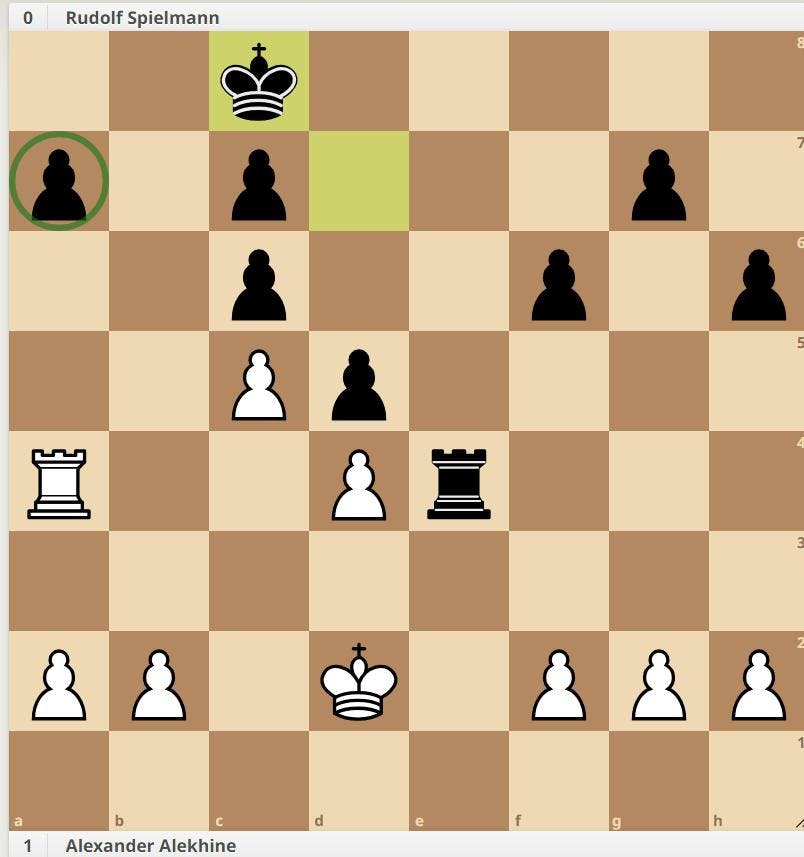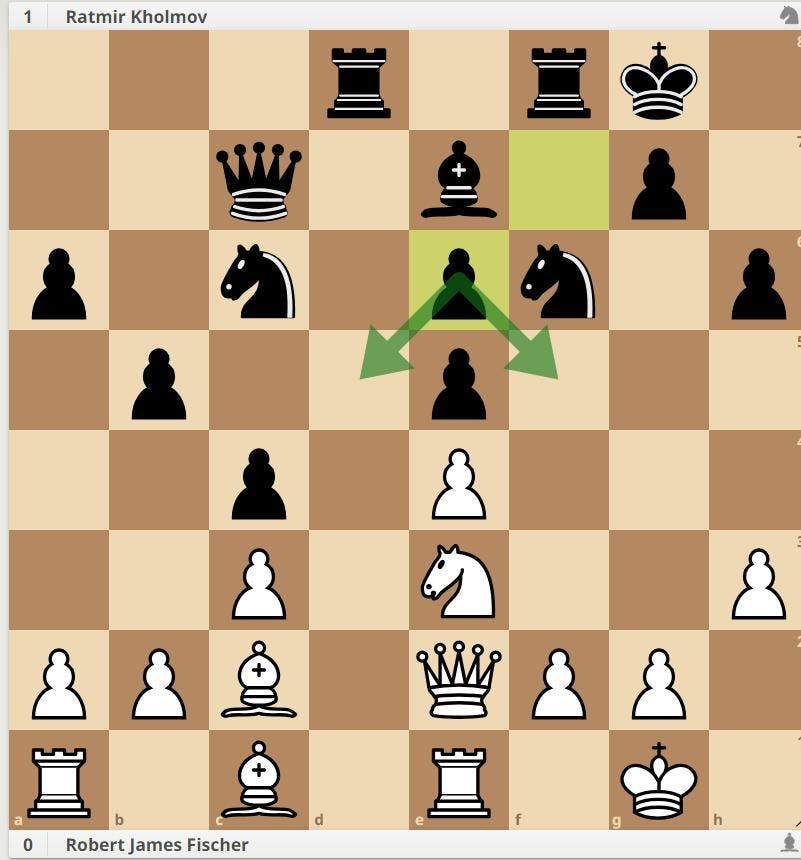
1. No pawn on b7 to allow a6

2. Doubled pawns control key squares
One of the more contentious and harder to appreciate aspects of chess strategy.
For many non-masters, doubled pawns are always bad, as they result in isolated and or weak pawns, as in position 1 (Alekhine - Marshall, 1927). There, black's doubled c-pawns mean a7 is both isolated and weak. Were his pawn structure perfect, black could play a6 and rely on the b7 pawn to protect a6. Instead, black is tied down to the weakness on a7.
But, as often as not, masters will willingly accept doubled pawns in return for the compensation they provide. That compensation can take the form of increased scope for their pieces, such as the resulting half open-file for their rooks, an initiative, or, as in position 2 (Fischer - Kholmov, 1965), greater control of key squares. There, black's doubled e-pawns not only given him a half-open f-file, but the pawn on e6 keeps the white knight out of both the key d5 and f5 squares.
When doubled pawns are good, when they are bad, and when they are neither good nor bad but could ultimately become either one thing or the other, depends entirely on the particulars of the position. Doubling one's own pawns should always be entertained as a possibility if there are tangible benefits for the radical change in structure.
See: 'Weakness' and 'Principle of two weaknesses'.
